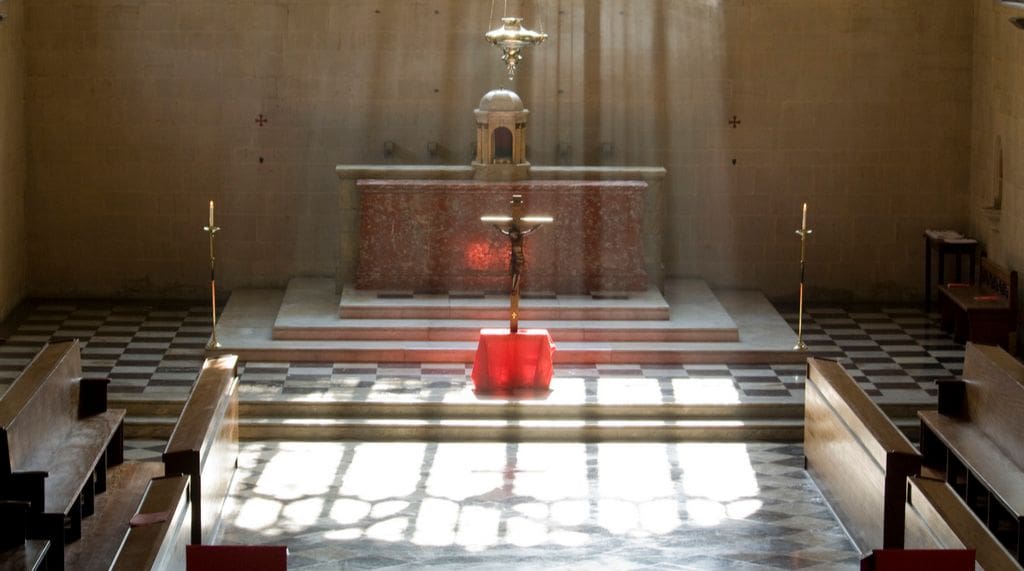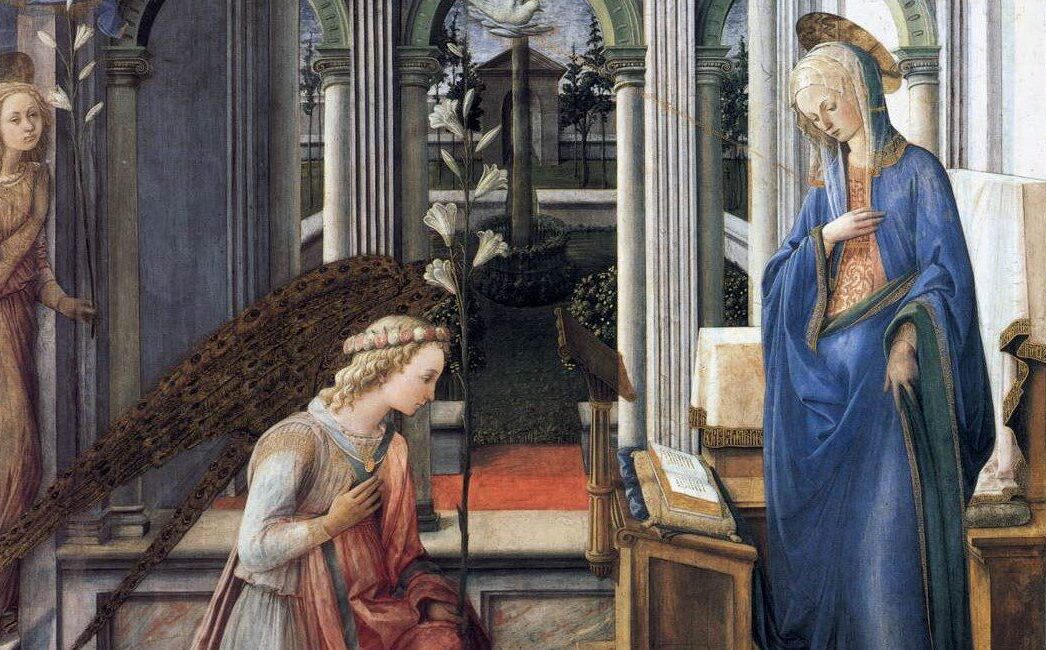Fifth Sunday of Lent
Covering Crosses and Images
In the Dioceses of the United States, the practice of covering crosses and images throughout the church from this Sunday may be observed. Crosses remain covered until the end of the Celebration of the Lord’s Passion on Good Friday, but images remain covered until the beginning of the Easter Vigil.
Palm Sunday
Three Options at Entrance
The memorial of this entrance of the Lord takes place at all Masses, by means of the 1) Procession or the 2) Solemn Entrance before the principal Mass or the 3) Simple Entrance before other Masses. The Solemn Entrance, but not the Procession, may be repeated before other Masses that are usually celebrated with a large gathering of people.
Proclaiming the Passion
The passion narrative occupies a special place. It should be sung or read in the traditional way, that is, by three persons who take the parts of Christ, the narrator and the people. The passion is proclaimed by deacons or priests, or by lay readers. In the latter case, the part of Christ should be reserved to the priest. (Paschales Solemnitatis, 33)
Mass of the Lord’s Supper
–Altar may be decorated with flowers. (Rubric for Holy Thursday [=HT], 5)
–The Gloria in excelsis (Glory to God in the highest) is said. While the hymn [i.e., the Gloria] is being sung, bells are rung, and when it is finished, they remain silent until the Gloria in excelsis of the Easter Vigil. (HT, 7)
–“After the proclamation of the Gospel, the Priest gives a homily…” (HT, 9).
–“Those who are chosen from amongst the people of God are led by the ministers…” (HT, 11). If the pastor chooses the optional foot washing, “it is for [him] to choose a small group of persons who are representative of the entire people of God—lay, ordained ministers, married, single, religious, healthy, sick, children, young people and the elderly—and not just one category or condition” (CDWDS letter of January 6, 2016).
–The priest washes hands following the washing of feet. (HT, 13)
–At the beginning of the Liturgy of the Eucharist, there may be a procession of the faithful in which gifts for the poor may be presented with the bread and wine. (HT, 14)
–Special inserts for Roman Canon.
–Communion to the homebound: “At an appropriate moment during Communion, the Priest entrusts the Eucharist from the table of the altar to Deacons or acolytes or other extraordinary ministers, so that afterwards it may be brought to the sick who are to receive Holy Communion at home” (HT, 33).
–Altar of repose: 1) in another part of the church (e.g., side altar), 2) in a chapel suitably decorated (e.g., the adoration chapel), or 3) “a place prepared and adorned in such a way as to be conducing to prayer and meditation” (e.g., outside of the church, such as basement or hall).
–Holy water stoups are emptied after Mass.
Good Friday
–Sacraments of Penance and the Anointing of the Sick may be celebrated on Good Friday and Holy Saturday—but no other sacraments (e.g., marriage). (Rubric for Good Friday [=GF], 1)
–Good Friday liturgy may not be celebrated in the absence of a priest. (GF, 4)
–The Good Friday liturgy takes place at about 3:00 in the afternoon (or as early as noon, but not later than 9:00 p.m.).
–There are two appropriate forms of showing the cross: uncovering in sanctuary or procession through nave.
–In the first from of showing the cross, as the Priest sings (“Behold the wood of the Cross!”), he is assisted in singing by the Deacon or, if need be, by the choir. (GF, 15)
–Priest may adore the cross with chasuble and shoes removed. (GF, 18)
–Only one cross may be used for adoration. (GF, 19)
Easter Vigil
–Vigil begins with the Sign of the Cross. (Rubric for the Easter Vigil [=EV], 9)
–If a deacon is not present to carry the Paschal Candle in the procession, the candle is carried by another minister and not by the priest. (EV, 15 and following)
–“The paschal candle should be prepared, which for effective symbolism must be made of wax, never be artificial, be renewed each year, be only one in number, and be of sufficiently large size so that it may evoke the truth that Christ is the light of the world. It is blessed with the signs and words prescribed in the Missal…” (Paschales Solemnitatis, n.82).
–Lights are turned on in the church when Paschal Candle is placed in the stand at the front of church at end of procession. (EV, 17)
–The Exsultet is sung by deacon, or priest, or layperson. (EV, 19)
–If possible, the Priest intones triple Alleluia. (EV, 34)
–Extra and more detailed rubrics about Christian initiation are included. (EV, 48-53)
–Before the “Behold the Lamb of God” in the Communion Rite, the priest may address briefly those who will receive Holy Communion for the first time. (EV, 64)
Resources
Music
–From the National Pastoral Musicians: http://npm.org/chants-of-the-roman-missal/the-proper-of-time/ and http://npm.org/chants-of-the-roman-missal/appendix-1-other-chants/
Other
–Letter on the “Preparation and Celebration of the Easter Feasts” from the Vatican (1988)
–Father Paul Turner’s Glory in the Cross: Holy Week in the Third Edition of the Roman Missal



